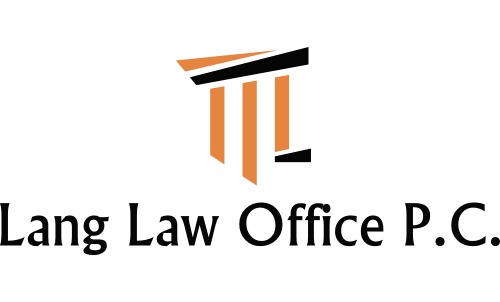We’ve ditched the traditional hourly rate system and adopted a flat fee pricing. ” Well, this way, you know exactly what you’re paying for upfront and there are no unexpected surprises. You get to pick and choose the accounting services you need, like a customized menu. You’re https://www.wave-accounting.net/ in complete control of when you start or stop using our services. We’re essentially just a call or a text away, no need for endless phone calls or draining trips to the accountant’s office. This post is highly educative and will help partnership businesses in consultancy .
Analysts look at net interest margin income and other fundamentals to value bank shares. Banks accept deposits from consumers and businesses and pay interest in return. A bank generates income when the interest it earns from loans exceeds the interest paid on deposits. In the U.S., banks are regulated by multiple agencies, including the Federal Deposit Insurance Corporation (FDIC).
How to Classify Inventory Deposits on the Balance Sheet
If the company takes $8,000 from investors, its assets will increase by that amount, as will its shareholder equity. All revenues the company generates in excess of its expenses will go into the shareholder equity account. These revenues will be balanced on the assets side, appearing as cash, investments, inventory, or other assets. If you’ll be keeping the money from your customer’s retainer or deposit in a separate trust account, you’ll need to set up a trust liability bank account in QBO. For the step by step process, click on this link and going directly to the create a trust liability bank account section.
- An entity shall present any unconditional rights to consideration separately as a receivable.
- Under the rules of double-entry accounting, they would qualify as a current liability.
- According to double-entry bookkeeping, all transactions must include two entries.
- If the deposit is for a longer-term project that will not be resolved within one year, it could instead be classified as a long-term liability.
- Based in St. Petersburg, Fla., Karen Rogers covers the financial markets for several online publications.
In short, the balance sheet is a financial statement that provides a snapshot of what a company owns and owes, as well as the amount invested by shareholders. Balance sheets can be used with other important financial statements to conduct fundamental analysis or calculate financial ratios. They can provide further details and explain to you thoroughly the things that you’ll need to consider when doing the process. As mentioned, banks earn interest on the deposits they lend out as loans. The amount a bank earns as revenue depends on how much interest it can charge.
Option 2. Invoice customers for deposits or retainers
To reduce the number of results to view, you can change the report period to display a narrower date range or select the small triangle next to a customer’s name to collapse https://turbo-tax.org/ their details. If you keep the money in your operating account, this procedure is unnecessary. When in doubt, try to reflect your real-world situation as much as possible.
Interest Rate Risk and Credit Risk
The prepayment is to be applied in increments of $10,000 on future invoices. I have the prepayment created as a liability account, but I’m not entirely certain how to record payment on invoices, using a portion of the prepayment plus a cash amount. They have contrasting business models, goals, revenue sources, and risks.
Products
When analyzed over time or comparatively against competing companies, managers can better understand ways to improve the financial health of a company. Shareholder equity is not directly related to a company’s market capitalization. The latter is based on the current price of a stock, while paid-in capital is the sum of the equity that has been purchased at any price. You use a Service item https://accountingcoaching.online/ on a Sales receipt; this is linked to Income or to Liability, to meet your accounting and tracking requirements. That way, everything has each customer name on it, and that Item (product/Service) for reporting and for handling taxable treatment. Prepaid income is a liability until the services are performed and then you would debit the prepaid liability, and credit sales in accrual basis.
These securities are assets and expected to increase in value, if they decrease in value, they may become trading liabilities. Prepayments that are taxable when you get them are also taxable when put on a credit memo to apply them (creates a negative sale and reversal of tax). Or, it is Not Taxed when you get it and Not Taxed when you use it to apply to the actual sale.
You can track how much of a retainer or deposit you are holding for each customer from the Balance Sheet report. The money is recorded as having moved from the special trust account to your business’ operating account. That means I’m equipped with advanced expertise and resources to help you leverage QuickBooks Online to its full potential. My goal is to make your accounting process smooth and efficient so you can focus on what you do best – running your business. If something goes wrong, and you are unable to fulfil your promise to deliver the goods or services to your customer, you will need to pay their deposits back.
For example, a company may require a large deposit from a customer before it begins work on a highly customized product. Otherwise, the seller is at risk of loss if the customer cancels its order prior to delivery. When a customer payment is instead treated as a security deposit, the account may instead be named security deposits, in order to more clearly differentiate the nature of the liability. The customer deposit is recorded as a credit or liability on the balance sheet, often in a customer deposit or customer prepayment account. It is typically a current liability as it will be settled within 12 months or less.
Likewise, its liabilities may include short-term obligations such as accounts payable and wages payable, or long-term liabilities such as bank loans and other debt obligations. Banks and non-financial entities have similar financial statements, but a few key differences due to the nature of their businesses. Banks operate on storing customer deposits and lending money out from those deposits. As such, they earn income from the difference between the interest they earn on lending and the cost of storing customer deposits. This fundamental difference in operations results in the difference of a bank’s financial statements from those of nonfinancial entities. Think of it like you are selling your services on a tax-exempt basis for customer deposits.
Mark the item as tax exempt (either in the set up of the item or on each line item on the sales receipt/invoice). Double check with the local sales tax authority to make sure that they don’t require you to collect sales tax on deposits. You can set up a deposit or retainer process for your company in QuickBooks Online. When you invoice the customer and receive payment against it, you’ll turn that liability into income. It follows the accounting principle; the deposit is a current liability that is debited and sales revenue credited.
These differences are reflected in their financial statements, mainly on their balance sheet and income statement. Understanding these line items is important in analyzing the performance of a bank and its risk management capabilities. In accounting, a customer deposit is simply repayment for the purchase of future goods and services.



